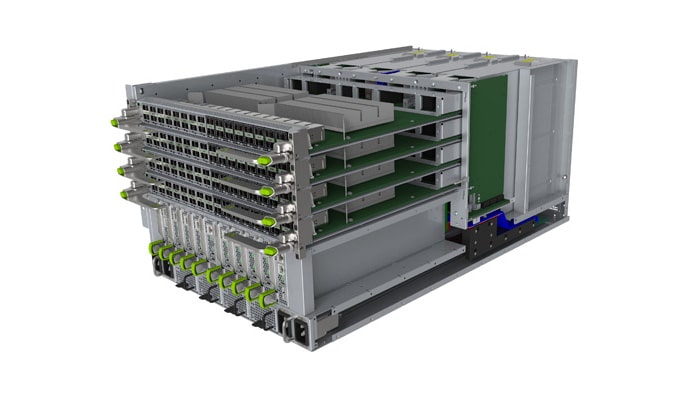
To meet the demand for higher bandwidth, Facebook constructed its 100G data centre pod that has now been completed with Backpack. The new open source offering is a modular switch platform for next-generation network delivery.
Facebook has already submitted the specification of Backpack to the Open Compute Project for review. Additionally, it has started deploying its presence for the social networking website to meet high-speed network requirements alongside a better cooling system to support 100G-compatible ASIC chips and optics.

“Backpack provides the bandwidth capacity that Facebook needs to meet the rapid growth in our traffic patterns,” the Facebook engineer team, consisted of Zhiping Yao, Jasmeet Bagga and Hany Morsy, writes in a blog post.
The Backpack has switch elements to split network and is touted to have “clear separation” of the data, control and management planes. There is an orthogonal direct chassis architecture to enhance signal integrity. Also, the platform comes with a thermal design to support low-cost 55C optics.
Although Facebook has upgraded the hardware on Backpack compared to its Wedge 100, it is still using the same open source FBOSS and OpenBMC. The software team for the modular platform leverage its previous efforts to support the new chassis that is equivalent to 12 Wedge 100 switches.
Furthermore, there is BGP routing protocol to enable the distribution of routes between different line cards in the chassis. Facebook engineers set up fabric cards as route reflectors and line cards as route reflector clients to flawlessly enable the existing protocol.
“We are integrating the switch’s software into the existing BGP monitoring infrastructure at Facebook, where we log all BGP route updates to our centralised in-memory data store, Scuba,” the engineering team explained.
Three-phase testing
Facebook is using its own testing approach to reviewing Backpack ahead of its public release. This approach includes three primary phases, namely engineering validation, design validation and production validation. In addition, the company incorporated a system-level testing of the latest modular platform in a pod at its Altoona Data Centre.
The previously launched Wedge 100 is currently available as a commercial switch, but Backpack would emerge as its replacement sometime next year. Till then, the solution is available from the Open Compute Project.












































































[…] The most recent praise by the social networking company was spotted at the time of launching its Wedge 100 […]